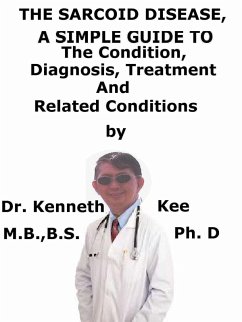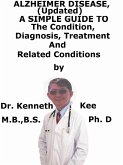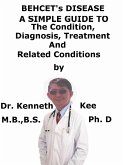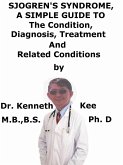Sarcoidosis is multi-system inflammatory disease
Incidence peaks in persons aged 25-35 years of age
Inflammation occurs in the lymph nodes, lungs, eyes and organs of the body
Forming non-caseating granulomas which usually resolve spontaneously
Things that may trigger the disease include infections
A person with a family history is likely to develop the condition
Granulomas are clusters of immune cells which affects organs of the body
It most commonly affects the lungs with lymph nodes enlargement mainly
There is chest pain, dry cough and breathlessness
There is also joint pain, fatigue and general weakness
To diagnose this condition, a biopsy of the lung is necessary.
Biopsy is usually done on the enlarged lymph nodes using bronchoscopy
Treatment is usually with corticosteroids therapy.
Immunosuppressive medicines may be necessary
This medicine may need to be taken for 1 to 2 years to improve lung function.
Rarely persons with severe heart or lung damage may need an organ transplant.
-An original poem by Kenneth Kee
Sarcoid disease is a disease of inflammation that happens in the lymph nodes, lungs, liver, eyes, skin, or other tissues.
Sarcoid disease is a disease featured by the formation of non-caseating granulomas in a number of tissues which normally resolve spontaneously.
The inflammation of tissues turns into bumps in the lymph nodes and numerous organs, such as the lungs and skin
1.It can also affect the eyes and liver and, less often, the heart and brain.
2.The disease affects people all over the world, in every climate and at every age.
3.It is fairly rare
4.Sarcoidosis has no known cause and no definite course of progression or treatment.
While this may be a bit problematic, it can also be a relief, since treatment may not even be needed in many cases.
5.Patients often naturally go into remission, meaning the symptoms ultimately fade on their own.
The precise cause of sarcoid disease is not known.
What is known is that when a person has the disease, tiny clumps of immune cells (granulomas) form in certain organs of the body.
The disease can involve almost any organ of the body.
It most often involves the lungs (90%).
Causes:
Doctors think that with sarcoid disease, persons have the genes that make it easy for them to develop the disease.
Things that may trigger the disease are infections with bacteria or viruses or contact with dust or chemicals.
Stages of Sarcoid Disease
Stage 1: The patient has lumps (granulomas) in the lymph nodes but not in the lungs
Stage 2: The patient has lumps in the lymph nodes and lumps in the lungs
Stage 3: The patient has lumps in the lungs but not in the lymph nodes
Stage 4: The patient has fibrosis in the lungs from the disease
Symptoms
There may be no symptoms.
Bilateral hilar enlargement is found present on routine chest X rays.
When symptoms happen, they can affect almost any organ system.
Almost all (90%) patients have lung symptoms
Diagnosis:
Imaging tests may help diagnose sarcoid disease:
a.Chest x-ray, CT scan to see if the lungs are involved
b.Lung gallium scan for lung involvement
c.MRI of the brain and liver for brain and liver involvement
To diagnose this disorder, a biopsy via bronchoscopy is required.
Treatment
Most people diagnosed with sarcoidosis do not need medicine.
The disorder resolves on its own in a few months
The doctor may also give the patient steroids if the disorder is affecting the heart, brain or eyes.
If steroid is not suitable,the doctor may give
1.Hydroxychloroquine
2.Immunosuppressant, or
3.TNF-alpha inhibitors
In very severe cases, the patient may need a lung transplant.
TABLE OF CONTENT
Introduction...
Dieser Download kann aus rechtlichen Gründen nur mit Rechnungsadresse in A, B, CY, CZ, D, DK, EW, E, FIN, F, GR, H, IRL, I, LT, L, LR, M, NL, PL, P, R, S, SLO, SK ausgeliefert werden.









